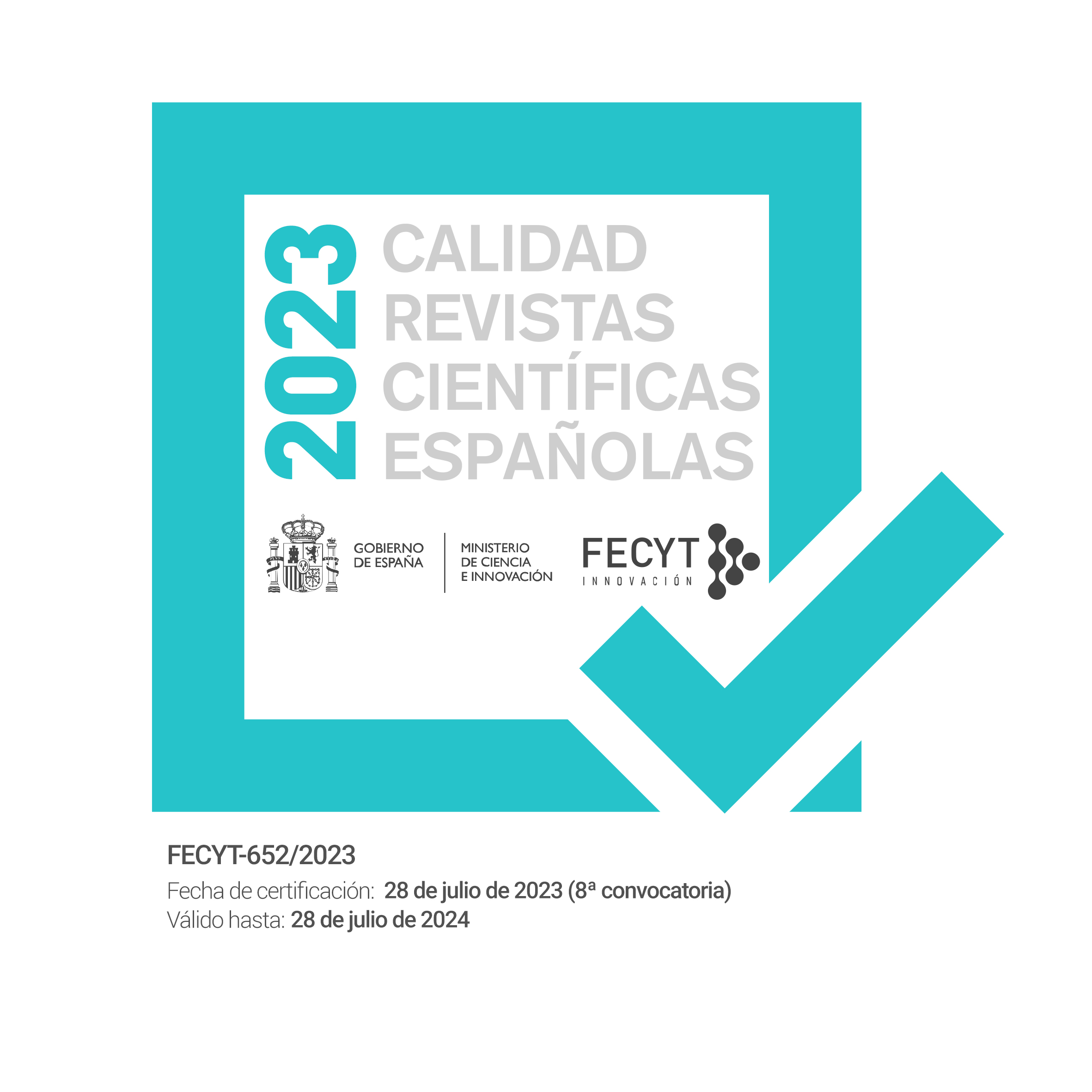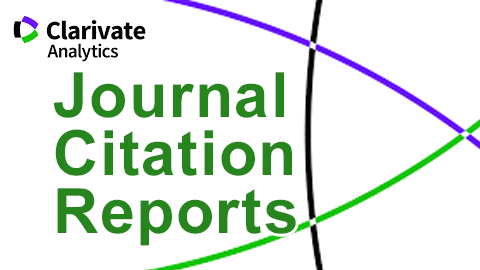A study of self-reported opinions of L1-based communication strategies in CLIL and NON-CLIL secondary-school learners of L3 English
Resumen
Abstract
This study examines the effect of Content-and-Language-Integrated-Learning (CLIL) and proficiency level in the foreign language (FL) on bilingual Basque/Spanish secondary school learners’ self-reported opinions of the use of first language (L1)-based communication strategies (CSs) in four different age/proficiency CLIL and NON-CLIL groups of third language (L3) English learners. The Quick Placement Test (QPT) was used to test general proficiency and a questionnaire taken from Martínez-Adrián, Gallardo-del-Puerto and Basterrechea (2019) was administered so as to explore learners’ self-reported opinions of their use of L1-based CSs. Results show that CLIL and more proficient learners reported to use L1-based CSs to a lesser extent than NON-CLIL and less proficient learners. Additionally, borrowings are common among beginner CLIL learners and students in a transitional proficient stage between an elementary and intermediate level whereas none of L1-based CSs are typical either of more experienced CLIL learners or of more proficient ones.
Keywords: CLIL; L1 influence; Communication strategies; L3 English; EFL
Resumen
Este estudio explora el impacto del Aprendizaje-Integrado-de-Contenidos-y-Lenguas-Extranjeras (AICLE) y de la competencia en la lengua extranjera en las opiniones de estudiantes de secundaria sobre el uso de estrategias comunicativas basadas en la primera lengua (L1). Los participantes estudian inglés como tercera lengua (L3) y difieren en curso y exposición a la metodología AICLE. Se utilizó un test de nivel para examinar su nivel de lengua, y se administró el cuestionario tomado de Martínez-Adrián, Gallardo-del-Puerto y Basterrechea (2019) para analizar sus opiniones. Los resultados muestran que los estudiantes AICLE y con más nivel en la lengua meta dicen usar la L1 con menos frecuencia que los no AICLE y menos competentes. Asimismo, la estrategia de préstamo es típica de los estudiantes AICLE principiantes y de aquellos entre un nivel básico e intermedio, pero ninguna estrategia basada en la L1 es típica ni de los estudiantes AICLE más avanzados ni de los más competentes.
Palabras clave: AICLE; influencia de la L1; estrategias comunicativas; adquisición del inglés como L3; inglés como lengua extranjera
Citas
Agustín Llach, M. P. (2009). The role of Spanish L1 in the vocabulary of CLIL and non-CLIL EFL learners. In Y. Ruiz de Zarobe and M. J. Jiménez Catalán (Eds.), Content and Language Integrated Learning: Evidence from Research in Europe (pp. 112-129). Bristol: Multilingual Matters.
Agustín Llach, M. P. (2011). Lexical Errors and Accuracy in Foreign Language Writing. Bristol: Multilingual Matters.
Agustín Llach, M. P. (2014). Exploring the lexical profile of young CLIL learners. Journal of Immersion and Content-Based Language Education, 2 (1), 53–73.
Agustín Llach, M. P. (2016). Age and type of instruction (CLIL vs. traditional EFL) in lexical development. International Journal of English Studies, 16 (1), 75-96.
Bialystok, E. (1983). Some factors in the selection and implementation of communication strategies. In C. Faerch & G. Kasper (Eds.), Strategies in Interlanguage Communication (PP. 100-118) London: Longman.
Bialystok, E. & Frölich, M. (1980). Oral communication strategies for lexical difficulties. Interlanguage Studies Bulletin, 5 (1), 3-30.
Celaya, M. L. (1992). Transfer in English as a Foreign Language: A Study on Tenses. Barcelona: PPU.
Celaya, M.L. (2007). I study natus in English: lexical transfer in CLIL and regular learners. Eds. R. Monray and A. Sánchez. Murcia: University of Murcia. 43-49.
Celaya, M. L. & Torras, M.R. (2001). L1 influence and EFL vocabulary: Do children rely more on L1 than adult learners?. Proceedings of the XXV AEDEAN Conference. Granada: Universidad de Granada.
Celaya, M. L. & Torras, M.R. (2001). L1 influence and EFL vocabulary: Do children rely more on L1 than adult learners?. Proceedings of the XXV AEDEAN Conference. Granada: Universidad de Granada.
Cenoz, J. (2001). The effect of linguistic distance, L2 status and age on cross-linguistic influence in third language acquisition. In J. Cenoz, B. Hufessen & U. Jessner (Eds.), Cross-linguistic Influence in Third Language Acquisition: Psicholinguistic Perspectives (pp. 8-19). Clevedon: Multilingual Matters. 8-19
Cenoz, J. (2003). Cross-linguistic influence in third language acquisition: Implications for the organization of the multilingual mental lexicon. Bulletin VALS-ASLA (Vereinigung für angewandte Linguistik in der Schweiz),78, 1-11.
Faerch, C. & Kasper, G. (1983). Strategies in Interlanguage Communication. London: Longman.
Gallardo-del-Puerto, F. (2015). L1 influence in CLIL vs. EFL schoolchildren: A study of codeswitching and transfer lapses. Paper presented at the 33rd AESLA International Conference. Technical University of Madrid. April, 16-18.
Gallardo-del-Puerto, F., Gómez Lacabex, E. & García Lecumberri, M. L. (2009). Testing the effectiveness of content and language integrated learning in foreign language contexts: The assessment of English pronunciation. In Y. Ruiz de Zarobe & R. M. Jiménez Catalán (Eds.), Content and Language Integrated Learning: Evidence from Research in Europe (pp. 63-80). Bristol: Multilingual Matters.
Gallardo-del-Puerto, F. & Gómez Lacabex, E. (2013). The impact of additional CLIL exposure on oral English production. Journal of English Studies,11, 113-131
Gené Gil, M., Juan Garau, M. & Salazar Noguera, J. (2012). A case study exploring oral language choice between the target language and the L1s in mainstream CLIL learners and EFL secondary education. Revista de Lingüística y Lenguas Aplicadas, 7, 133-146.
Jourdain, S. (2000). A native-like ability to circumlocute. The Modern Language Journal, 84(2), 185-197.
Lasagabaster, D. (2008). Foreign language competence in content and language integrated courses. The Open Applied Linguistics Journal, 1, 30-41.
Lo, Y. Y. & Lin, A. M. Y. (2019). Curriculum genres and task structure as frameworks to analyse teachers’ use of L1 in CBI classrooms. International Journal of Bilingual Education and Bilingualism, 22 (1), 78-90
Manzano Vázquez, B. (2014). Lexical transfer in the written production of a CLIL group and a non-CLIL group. International Journal of English Studies, 14 (2), 57-76.
Mehisto, P., Marsh, D. & Frigols, M. P. (2008). Uncovering CLIL. Content and Language Integrated Learning in Bilingual and Multilingual Education. Oxford: Macmillan.
Muñoz, C. 2007. Cross-linguistic influence and language switches in L4 oral production. Vigo International Journal of Applied Linguistics, 4, 73-94.
Navés, T. (2009). Effective Content and Language Integrated Learning (CLIL) Programmes. In Y. Ruiz de Zarobe & R. M. Jiménez Catalán (Eds.), Content and Language Integrated Learning: Evidence from Research in Europe (pp .22-40). Bern: International Academic Publishers.
Navés, T. (2011). The promising benefits of integrating content and language for EFL writing and overall EFL proficiency. In Y. Ruiz de Zarobe, J. M. Sierra & F. Gallardo-del-Puerto (Eds.), Content and foreign language integrated learning: contributions to multilingualism in European contexts (pp.103-128). Bern: Peter Lang.
Navés, T., Mialpeix, I. & Celaya, M. L. (2005). Who transfers more…and what? Cross-linguistic influence in relation to school grade and language dominance in EFL. International Journal of Multilingualism, 2 (2), 113-134.
Navés, T., & Victori, M. (2010). CLIL in Catalonia: An Overview of Research Studies. In Y. Ruiz de Zarobe and D. Lasagabaster (Eds.), CLIL in Spain: Implementation, Results and Teacher training (pp. 30-54). Newcastle upon Tyne: Cambridge Scholars Publishing.
Poulisse, N. (1987). Problems and solutions in the classification of compensatory strategies. Second Language Research, 3 (2), 141-153.
Poulisse, N. (1993). A theoretical account of lexical communication strategies. In R. Screuder & B. Weltens (Eds.), The Bilingual Lexicon (pp. 157-189). Amsterdam: John Benjamins B. V.
Poulisse, N. & Bongaerts, T. (1994). First language use in second language production. Applied Linguistics, 15 (1), 36-57.
Purdie, N. & Oliver, R. (1990). Language learning strategies used by bilingual school-aged children. System, 27, 375-38.
Tarone, E. (1977). Conscious communication strategies in interlanguage: A progress report. In H. D. Brown, C. A. Yorio & R. C (Eds.), Teaching and Learning English as a Second Language: Trends in Research and Practice, On Tesol 77 (pp. 194-203). Washington D. C.: TESOL.
Tarone, E. & Yule, G. (1987). Communication strategies in east-west interactions. In E. Larry Smith (Ed.), Discourse Across Cultures: Strategies in World Englishes (pp. 49-65). NY: Prentice-Hall.
Villareal Olaizola, I. & García Mayo, M. P. (2009). Tense and agreement morphology in the interlanguage of the Basque / Spanish bilinguals: CLIL versus non-CLIL. In Y. Ruiz de Zarobe & R. M. Jiménez Catalán (Eds.), Content and Language Integrated Learning: Evidence from Research in Europe (pp.157-175). Bristol: Multilingual Matters.
Wannaruk, A. (2003). Communication strategies employed by EST students. Studies of language and language teaching, 12, 1-18.
Descargas
Publicado
Número
Sección
Licencia
Reconocimiento – No comercial (CC BY-NC). Bajo esta licencia el usuario puede copiar, distribuir y exhibir públicamente la obra y puede crear obras derivadas siempre y cuando estas nuevas creaciones reconozcan la autoría de la obra original y no sean utilizadas de manera comercial.
Los autores retienen todos sus derechos de publicación y copyright sin restricciones.









